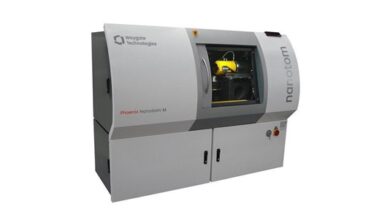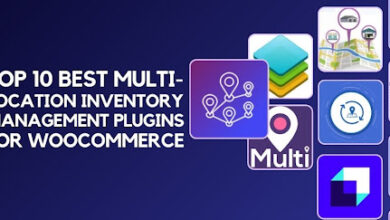The Advantages of HR Software

Managing people in any organisation can be challenging. Many HR teams still use spreadsheets, paper files, and long email chains to track attendance, leave requests, and payroll details. These manual tasks take a lot of time, increase errors, and make it harder to keep employees happy and organised.
The solution to these everyday challenges lies in hr systems software , a digital system that helps businesses handle all people-related tasks from one place. Modern platforms make it easier for teams to manage everything, from onboarding and payroll to time tracking and performance reviews, saving hours of manual work and improving accuracy.
What Is HR Software?
HR software, or Human Resources software, is a digital tool that helps companies manage their people and processes more efficiently. It replaces paper records and manual spreadsheets with an online system that stores and updates all employee information in real time.
Most HR systems cover areas such as:
- Employee data management
- Payroll and benefits
- Attendance and time tracking
- Recruitment and onboarding
- Performance management
- Leave requests and approvals
By centralising this data, HR teams spend less time on administration and more time improving company culture and employee engagement.
Why Businesses Need HR Software
Every business, big or small, depends on people. Managing those people well is key to success. Without a structured system, HR work can become confusing and inconsistent. For example, managers might struggle to find the latest version of an employee’s contract, or payroll might get delayed due to missing data.
Here’s why companies need HR software today more than ever:
- Manual work is time-consuming: Filling forms, updating spreadsheets, and checking data can take hours every week.
- Errors are common: One small mistake in a salary calculation or attendance sheet can cause major issues.
- Compliance is complex: Keeping up with changing laws and rules is hard without automation.
- Remote work needs digital systems: With teams working from different locations, cloud-based systems are essential.
HR software solves all these problems by automating repetitive tasks, ensuring data accuracy, and making processes smoother and faster.
1. Saves Time and Reduces Manual Work
One of the biggest advantages of HR software is time-saving. Traditional HR tasks — like entering employee data or calculating payroll — can take several hours each month. With HR software, these processes are automated.
For example, once an employee’s data is entered into the system, it can be used automatically for payroll, attendance tracking, and benefits management. This reduces duplicate work and ensures information stays up to date.
By cutting down on paperwork, HR teams can focus on strategic work such as improving employee engagement or developing company policies.
2. Improves Accuracy and Compliance
Mistakes in HR can cost businesses both time and money. Miscalculating wages or missing legal updates can lead to compliance issues. HR software reduces these risks by handling data automatically and keeping records consistent.
Most systems also include built-in compliance checks. For example, they can track working hours according to labour laws or store documents required for audits. This means HR teams don’t have to worry about missing deadlines or filing errors.
Accurate and well-organised data also improves trust between employees and the company, as people know their records and pay are handled correctly.
3. Centralises Employee Information
In many companies, information is scattered — some data in spreadsheets, some in emails, and some in paper files. HR software brings everything together in one secure digital location.
Every employee’s details — such as contact info, job role, salary, and performance — are stored in one place. Managers can access what they need instantly, instead of searching through folders or emails.
Centralising data also helps with better decision-making. For example, HR teams can quickly view attendance trends or performance reports to identify where improvements are needed.
4. Makes Onboarding Easier
Starting a new job can be stressful for employees and HR alike. HR software simplifies onboarding by automating the process.
Instead of printing forms or sending multiple emails, new hires can log in to the platform to complete all necessary paperwork online. They can review policies, upload documents, and even get their first training tasks assigned automatically.
For HR teams, this means fewer mistakes and faster onboarding. For employees, it creates a smooth and professional first impression — helping them feel welcomed and supported from day one.
5. Enhances Performance Management
Managing employee performance manually often leads to inconsistent reviews and delayed feedback. HR software helps create a fair and continuous performance process.
Managers can set clear goals, track progress, and schedule check-ins — all within the system. Employees can also share feedback, view their goals, and see how they’re performing in real time.
6. Improves Employee Engagement and Retention
Employees who feel valued and supported are more likely to stay with a company. HR software helps create that supportive environment.
It gives employees access to their own profiles, allowing them to request time off, view payslips, and track performance goals without waiting for HR. Some systems also include recognition features, letting managers quickly praise good work.
When employees can see their progress and communicate easily, they feel more in control and connected to the company. This sense of ownership increases engagement and reduces turnover.
7. Supports Remote and Hybrid Work
Since many businesses now operate remotely or in hybrid setups, cloud-based HR software has become essential. Employees can log in from anywhere to mark attendance, apply for leave, or view payslips.
For HR teams, it provides full visibility across all locations. Managers can monitor who’s working, approve time-off requests, and ensure productivity without needing everyone in one office.
Remote access also makes HR processes more flexible and inclusive — allowing global teams to stay connected under one digital roof.
8. Provides Real-Time Insights for Better Decisions
Modern HR software includes dashboards and reports that show real-time data about your workforce.
For example, you can track absenteeism rates, training completion, or employee satisfaction levels. With these insights, HR teams and managers can make informed decisions quickly.
Data-driven decisions lead to fairer practices — such as promotions based on performance, not just opinion. Over time, this builds a stronger, more transparent workplace culture.
9. Boosts Productivity Across the Company
When HR processes are smooth, everyone benefits — not just the HR team. Employees can focus on their jobs instead of paperwork. Managers can make faster decisions.
Automation reduces back-and-forth communication and ensures everyone has access to the same, updated information. The result is a more productive, efficient workplace where time is spent on meaningful work rather than routine admin tasks.
10. Scales Easily with Company Growth
As a company grows, so does the complexity of managing people. HR software scales easily, allowing you to add new employees, departments, and features as needed.
Whether it’s handling 10 people or 1,000, the system adjusts automatically. This flexibility makes it ideal for fast-growing startups and established enterprises alike.
Conclusion
People are at the heart of every successful company. But managing people effectively requires time, structure, and the right tools. That’s where HR software makes a real difference.
It saves time, improves accuracy, and creates a smooth, transparent experience for both employees and managers. From onboarding to performance tracking, everything becomes simpler and smarter.



